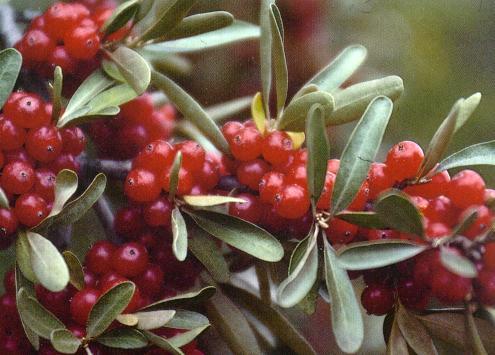Silver Buffaloberry Production in Manitoba
Description

The buffaloberry (Sheperdia argentea Nutt.) is native to Canada and belongs to the family Oleaster. Buffaloberry is a large shrub or small tree which grows up to 16 feet (5 m). The plant is dioecious meaning there are separate male and female plants. The branches are spine tipped which can make working with the tree difficult.
Uses
Buffaloberries have many uses in jams, jellies, dried, frozen, fresh in salads, ice cream, and drinks.
Site Selection/ Spacing/Rooting Depth
Buffaloberry like other small fruit requires a well-drained, deep loam soil which contains greater than one percent organic matter. Buffaloberry is salt and drought tolerant and will tolerate spring flooding. A soil pH of between 5.5 and 7.5 should be suitable for growing pincherries.
Plants should be spaced six feet (2 m) between plants and 15 feet (4.5 m) between rows to aid mechanical harvesting. Detailed information about rooting depth is not known, however, because the plants like a moist environment it is likely they are not deep rooted. Buffaloberry is a nitrogen fixing plant.
Harvesting/Nutritional Value
The fruit ripens in late summer and should be picked slightly under ripe when making jellies because of the higher pectin levels. The fruit is bright red when ripe and 0.2 to 0.4 inches (6 to 9 mm) in diameter with a single flat seed inside. When eating fresh, fruit should be harvested after a light frost which tends to make the fruit more sweet. The fruit can be harvested by laying sheets under the tree and shaking it, or by hand. It is presumable that mechanical harvesters could be used. The nutritional value of the fruit has not been determined but it does contain many vitamins and minerals.
Note: Large quantities of buffaloberry should not be consumed because the berries contain a substance called saponin which causes irritation of the digestive system. However, small amounts can be consumed with little risk.
Renovation
As the orchard ages the trees will require regular pruning.
